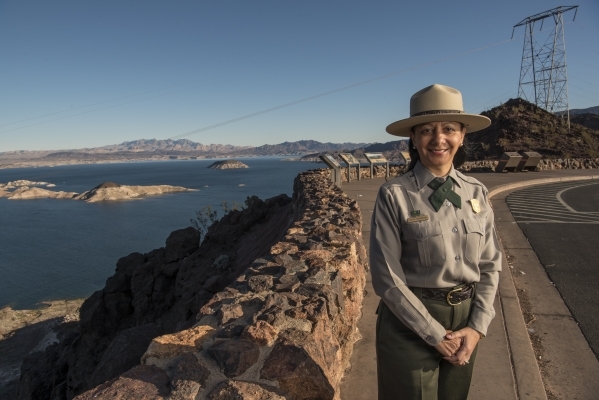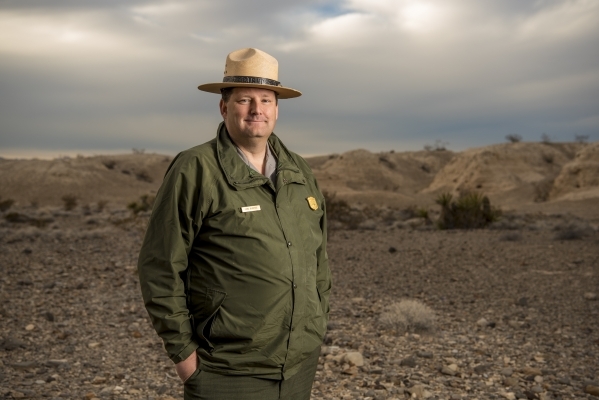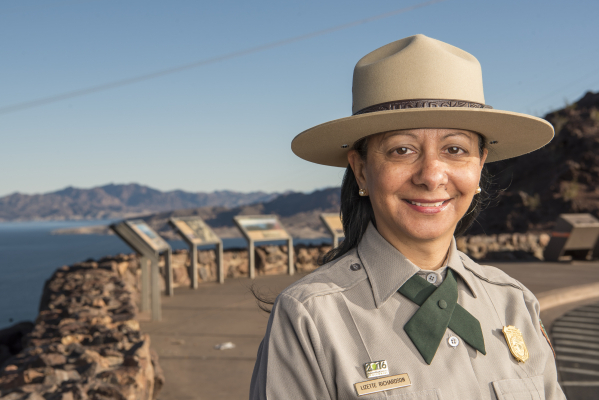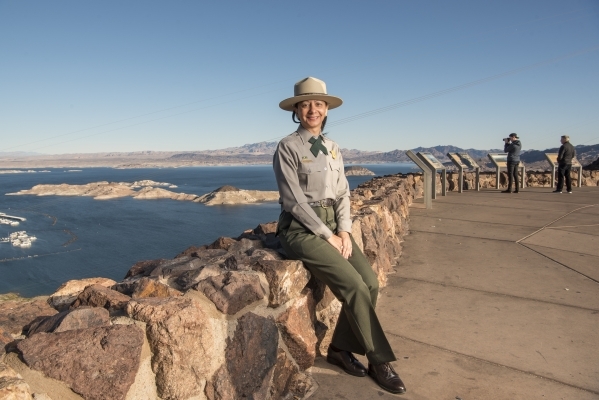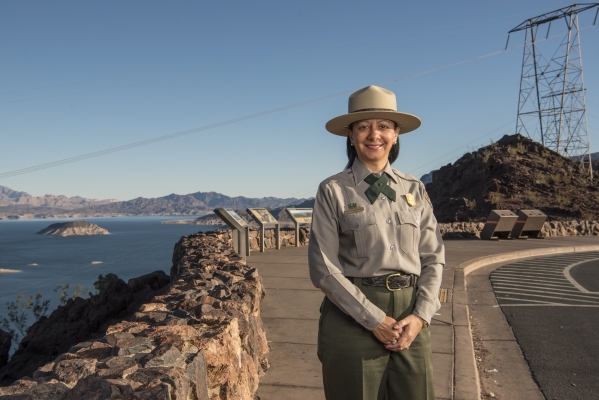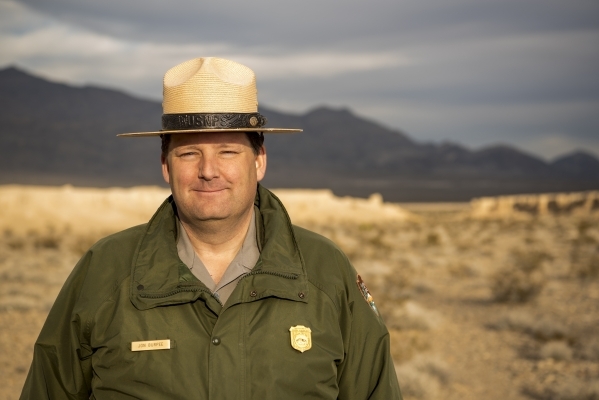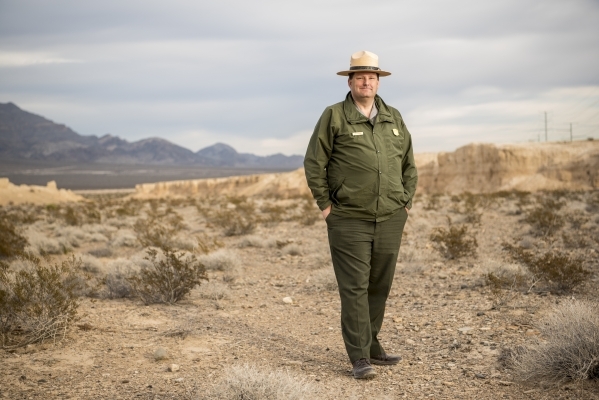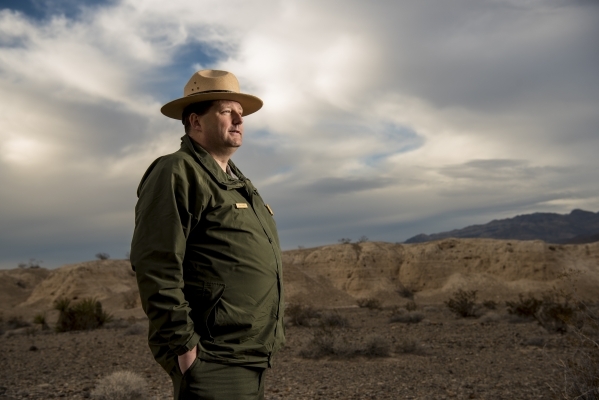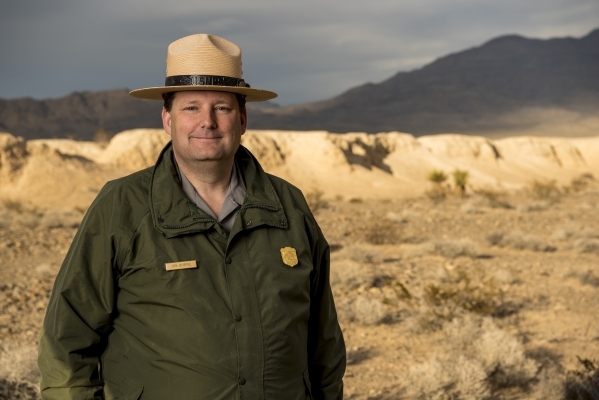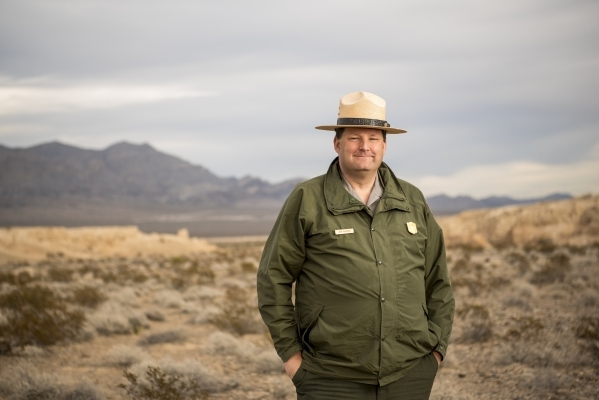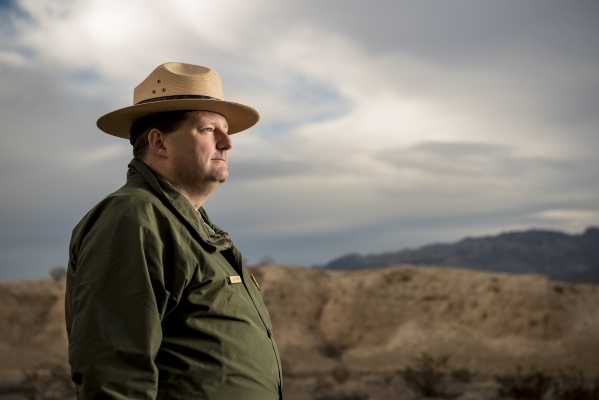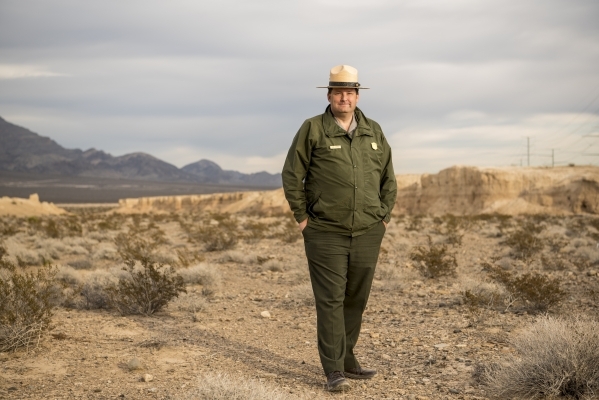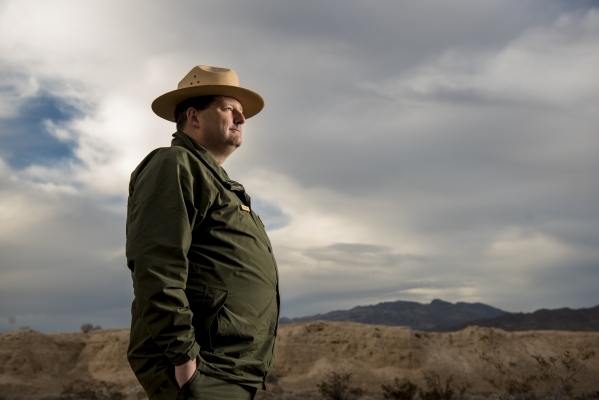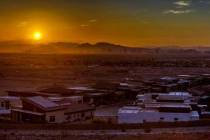Southern Nevada sites get new leaders as National Park Service celebrates centennial
They wear the same flat-brimmed hat and hold the same title, but their jobs could not be more different.
Lizette Richardson oversees about 200 staff members and 7 million annual visitors at a park that covers 1.5 million acres of land and water in two states, including the nation's largest man-made reservoir.
Jon Burpee is the top man — and only employee so far — at a new 22,650-acre preserve littered with ice age fossils but not yet ready to welcome large numbers of visitors.
In July, the National Park Service chose Burpee as the first permanent superintendent for Tule Springs Fossil Beds National Monument at the northern edge of the Las Vegas Valley.
A month later, Richardson was named superintendent of Lake Mead National Recreation Area, the first woman to hold that post.
They are the new leaders of Clark County's two very different National Park sites, and they're on the job just in time to help the Park Service celebrate its 100th birthday this year.
LIZETTE RICHARDSON
Age: 53
Born: New York City
First Park Service site visited: Statue of Liberty National Monument
Richardson has a special tie to the centennial.
In 2011, she was one of just three employees from across the nation asked to join Park Service Director Jonathan Jarvis onstage at Ford's Theatre in Washington when he formally launched the preparations for the agency's 100th year.
"That really meant a lot to me to get that call," said Richardson, who was Lake Mead's chief of maintenance and engineering at the time. "Now to be here in a major leadership role as a superintendent rolling out the centennial, I've kind of got that added personal connection."
Lake Mead will mark the centennial with activities geared toward getting people to enjoy the public land around them. In April, a localized version of that "Find Your Park" message will be featured on the canopy at Fremont Street Experience, Richardson said.
"The overarching goal is to connect and create that next generation of visitors, supporters and advocates," she said. "That's what we're going to do."
But her first year as superintendent won't be all birthday cake.
The recreation area faces several challenges, from drownings to invasive quagga mussels, rogue cattle to climate change.
Since January 2000, drought on the overtaxed Colorado River has dropped the surface of Lake Mead by 130 feet, forcing several marinas and boat launch ramps to close. During that time, the Park Service has spent about $40 million chasing the shrinking shoreline, and Richardson oversaw much of that work as maintenance and engineering chief.
She said the park is about to start planning for the reservoir's next 130-foot drop.
"We've got to be proactive," she said. "Our goal is to maintain access to the lake. That was the priority when I was here (before); that's still the priority now as superintendent."
It took Richardson a while to find her way to the Park Service.
She was born and raised in New York City, where an interest in math and science steered her to a degree in civil engineering from Manhattan College.
She later worked as an engineer for the Defense Department and the Army Corps of Engineers while her husband served in the Air Force.
In the late 1980s, his career brought them to Nellis Air Force Base, where she assisted with the design of the base's hospital and main gate before the Air Force sent them elsewhere.
They returned to the valley 11 years ago, after he retired.
"We like Southern Nevada. We like the Southwest, so we moved back here, and that's when the journey with the Park Service began."
She would spend the next nine years at Lake Mead managing million-dollar infrastructure projects and overseeing more mundane tasks such as grading beaches and repositioning navigational aids and floating toilets.
Then in 2013, she was bumped up to the Park Service's national office in Denver to help shape the agency's plans and policies for major capital projects and its response to natural disasters and climate change.
She said she enjoyed the agencywide work, but when the top job opened up at the nation's oldest and largest recreation area, Richardson jumped at the chance.
"I was really hoping I could come back," she said.
So what's the big attraction?
"It's just so vast and complex," Richardson said. "I really like that. I like going from one thing to the next to the next. Never a dull moment, and that's what I love about it."
JON BURPEE
Age: 43
Born: Longview, Washington
First Park Service site visited: Fort Vancouver National Historic Site, Washington
Burpee's path in the Park Service was forged at age 8, during a tour of historic Fort Vancouver, not far from where he grew up in southwestern Washington.
He said he remembers being captivated by the park ranger leading the tour, the way he made the history of the place come alive.
Bupree wound up back at that fort years later, after earning a degree in history from the University of Washington. He started out as a volunteer at Fort Vancouver in 1996 and parlayed that into a seasonal job with the Park Service.
"They ruined a perfectly good volunteer when they hired me," he said with a laugh.
He went on to work as a seasonal guide at Death Valley National Park, where he portrayed a newspaper reporter from the 1930s in a living-history performance at Scotty's Castle. That's where he met his wife, who played opposite him on the castle tours.
"I may have broken character and asked her out on a date on one of them," Burpee said.
Now he is a newly minted park superintendent charged with the unique task of setting up a new monument.
So far, it's a shoestring operation.
Congress just approved the first base budget for Tule Springs: $180,000, about 100 times less than the $18.8 million Lake Mead got last year.
A few signs and some fences are all that mark the boundary of the monument. A three-sided information kiosk, paid for by the nonprofit group Protectors of Tule Springs, has been ordered but hasn't arrived yet.
Burpee works out of a borrowed Bureau of Land Management office and his government-issued SUV. Inside the vehicle are several shovels, boxes of educational materials, a giant novelty check from the Protectors, a full-scale replica of a saber-toothed cat skull, and rolls of plastic bags for the trash he collects from the monument every time he's out there.
"I hate to think of how many miles I've hiked. My personal goal is to make sure I've done at least a hundred this year for the centennial," he said. "I've kind of worn out a pair boots already, so that's a good amount of walking."
Burpee said he first became acquainted with Tule Springs while working in Congress as part of a Park Service fellowship. He was assigned as a staff member to the Senate Energy and National Resources Committee when the national monument was being considered as part of a massive defense spending bill in 2014, and he was struck by the warm reception the idea received.
"Everybody was happy with Tule Springs. It was kind of nice — and rare," Burpee said. "I have to admit I was intrigued from that very moment."
The monument preserves an area prized by scientists for its wealth of fossils from a vast cross section of time, which allows researchers to study ancient climate change and its effect on animals that died out at the end of the last ice age about 11,000 years ago. So far, the chalky hills along the upper Las Vegas Wash have yielded fossilized pollen and the bones of extinct mammoths, horses, camels, bison, llamas, saber-toothed cats, lions and ground sloths the size of grizzly bears.
But the preserve just beyond the last tract houses at the valley's northern edge is also criss-crossed by off-road vehicle tracks and littered with shell casings and illegal dump sites. Cleaning up the place and keeping it that way will be one of the Park Service's biggest challenges, but Burpee is optimistic.
"There's nothing we've done here as a society that we can't undo together," he said. "As we start to bring on our educational component, I think that will be a big part of the lesson — not just about the paleo resources but the desert. It is fragile. We can treat it a lot better than we have in the past."
For the moment, Burpee is the only person on the payroll, although the area is being patrolled by a law enforcement ranger on loan from Lake Mead and watched over by the Protectors and other volunteers.
"I joke about being the lone ranger. By no means am I alone," he said.
Burpee hopes to hire his first two full-time rangers by late spring — one to oversee educational programs, the other to coordinate volunteers. They will work out of the Corn Creek visitor center at Desert National Wildlife Refuge, just north of the monument, where they will double as refuge employees and help the U.S. Fish & Wildlife Service keep that site open two extra days a week.
Also in the coming months, Burpee hopes to see the monument's advisory council appointed so work can begin on a foundation document that will guide the development and operation of Tule Springs for the next decade at least.
"We joke about this idea that it took 200,000 years for this fossil assemblage to get here. The good news is I can guarantee the park planning will not take 200,000 years," he said. "Folks worked a long time to get this place designated. We want to get started as quickly as possible."
Contact Henry Brean at hbrean@reviewjournal.com or 702-383-0350. Follow him: @RefriedBrean



